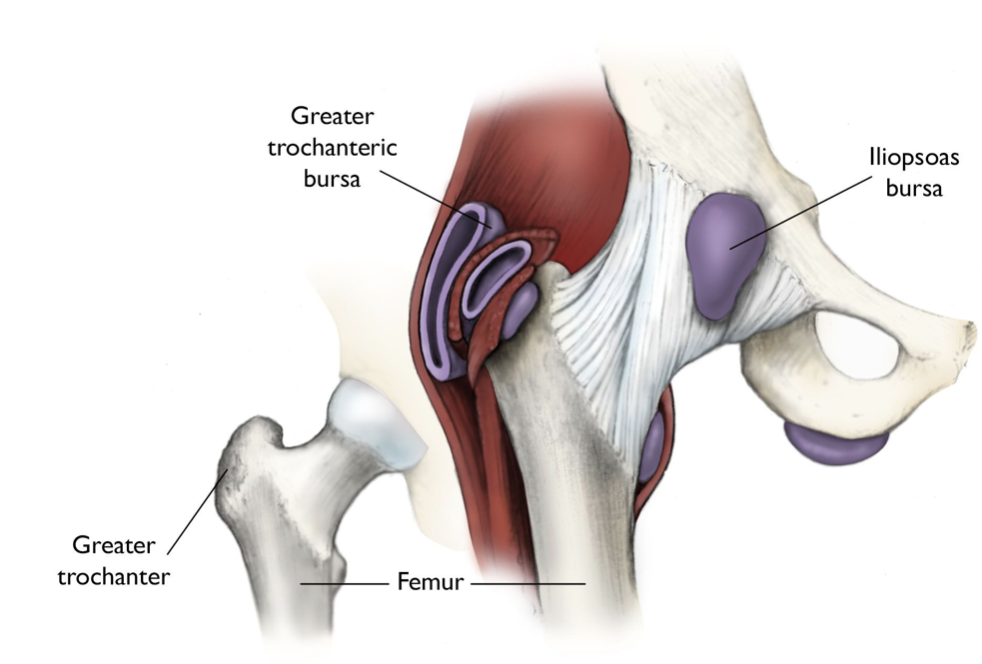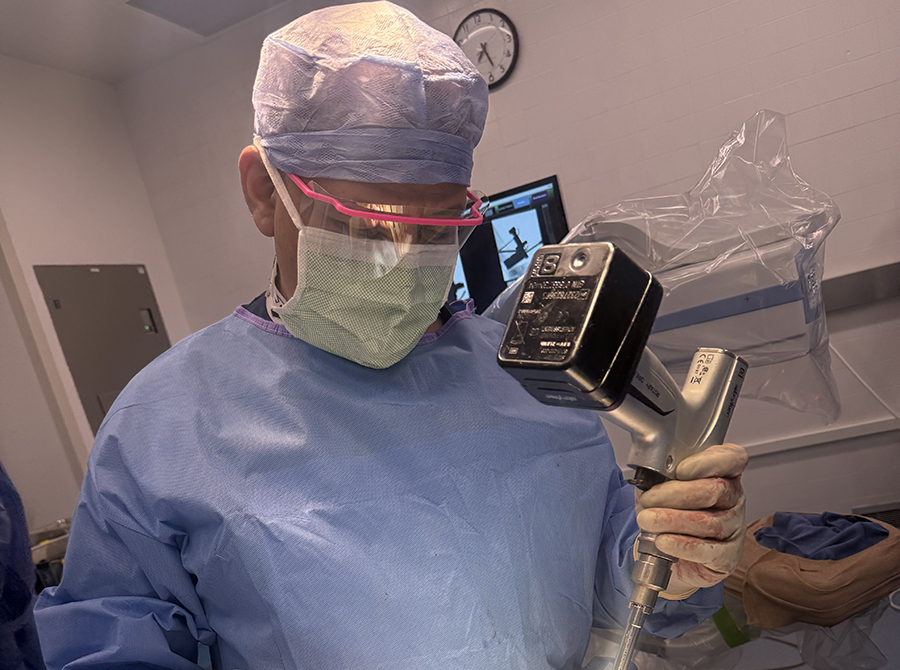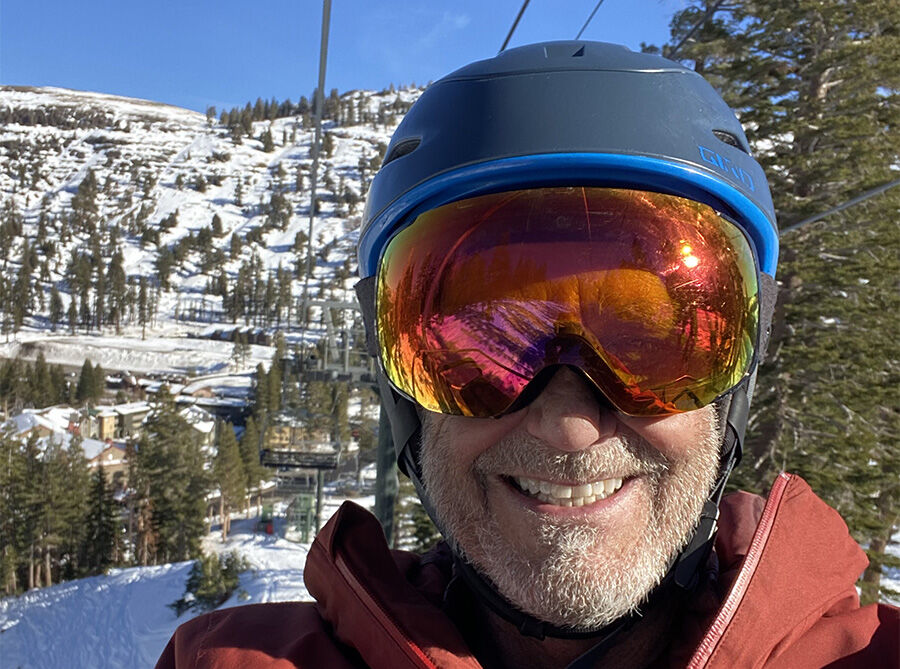Spine Surgical Technique Can Be Used For “Almost Anything”
Saqib Hasan, MD, is a leader in endoscopic spine surgery in California, and he continues making strides in his practice.
Dr. Hasan, of Walnut Creek-based Golden State Orthopedics and Spine, has used endoscopic techniques to perform a pars fracture repair on several young patients in recent months.
He spoke with Becker’s about the advancement and what’s next for endoscopic spine surgery and his work with Golden State Orthopedics and Spine.
Note: This conversation was lightly edited for clarity and length.
Question: Can you share more about your pars fracture case?
Dr. Saqib Hasan: The pars fracture repair has been around for a while, and I’ve done some open cases. With open cases I think about it as doses of surgery. So you can have an “adult dose” of medicine, but you wouldn’t give that same adult dose to a child. Fortunately, most of the pars fractures are for younger patients.
This particular case is a result of trying to find a “lower dose” for the patient because of their age and their activity level. A lot of these patients who have pars fractures are typically higher level, young athletes who want to compete and have big dreams. I think you have to really tailor the treatment to the population, and this population, because they’re young and athletic and have high hopes, we have to find a solution that is tailored to them. We’re taking an old procedure, making it more palatable to the patient.
There’s essentially three parts of this procedure. We’re putting the screw across the fracture site, which is pretty straightforward and then when you have to debride the fracture site, and sometimes you have to put some bone graft in there. Now we’ve already figured out how to minimally invasively put in screws percutaneously.
The part that I think is new and innovative is to actually visually confirm that whatever you’re doing with the navigation robot or fluoroscopy can be verified with your naked eye using an endoscope. Then you can actually see the wire being placed across a fracture site, make sure it’s in a good position and debride. You can do all of this with a few tiny little incisions. The value proposition here is that you can have the same efficacy of an open procedure in a package that’s palatable for the patient.
Q: What other kinds of innovations in the endoscopic spine space excite you?
SH: When endoscopic spine surgery was first popularized, it was mostly for discectomies. I think the big value proposition when endoscopic spinal first came is that with the transferaminal approach. Now we’re finding that you can use it for almost anything. For example I routinely use endoscopy for sacroiliac joint denervation. We published a paper on this in 2024 on the value of utilizing endoscopic techniques for this procedure, and we showed about 70% to 80% improvement after two years. That’s an option for patients that didn’t exist before, because many pain management doctors don’t perform SI joint ablations anymore for insurance purposes, and fusion is the only other option. Utilizing the endoscope allows us to address gaps in treatment.
What excites me is the idea of merging robotics and different technologies within endoscopy to automate processes. You have to get to that stage before you get to artificial intelligence, and I think the idea of making all spine surgery have some degree of robotics is what’s exciting right now. Generally what excites me is finding new ways to leverage the endoscope to make the patient, recovery and patient or the dose of surgery a lot easier for the patient.
Q: CMS has been an obstacle for endoscopic spine growth and adoption. What’s one thing that you would want from CMS to help endoscopic spine thrive?
SH: CMS has to look at the data, and I think that there’s a lot of research efforts being put into better understanding of the value of endoscopic spine surgery. I’m part of a group called the Endoscopic Spine Study Research Group, a consortium of surgeons from many different institutions across the U.S., and we study all our outcomes.
Only through establishing good research can we show CMS that there’s some value here. It is a very hard topic to read to research, because it’s not like we’re comparing endoscopic to open in some circumstances. Sometimes we’re comparing an endoscopy versus a traditional fusion. It’s hard to quantify the value of that surgery according to CMS so what we have to do is be able to convey that by leveraging endoscopic technologies, you can have a huge impact on costs for the healthcare system down the line by avoiding a fusion.
As CMS moves towards value-based care endoscopy provides huge value, and I don’t think it’s going to be over comparing a discectomy as open versus endoscopic surgeries. It’ll be performing an endoscopic decompression on someone who you would normally perform a fusion on. The question is, how does CMS gauge that? How do you put the value on that?
Q: Golden State Orthopedics and Spine was formed in 2022. What have been the challenges and opportunities you’ve seen with it since the merger launched?
SH: I think Golden StateOrthopedics and Spine is a testament that an independent practice can still thrive and exist in this landscape of large mergers and acquisitions from big healthcare entities and academic institutions. We’re like the last vestige of true, independent, physician owned practices, and I think that we’re doing very well in our area. I think the merger was very successful, and our goal is to keep growing and give physicians a chance to be part of something that they might think is dying off.
Q: What particular strategies have helped maintain your group’s viability?
SH: As part of the independent practice that’s very large, there’s a certain degree of camaraderie and shared vision and shared goals. The autonomy that we have by not having to answer to larger institutions allows us to prioritize our needs. Because we’re not as large as gigantic healthcare corporations, that nimbleness and shared vision lets us navigate the landscape in a way that doesn’t crush us.
By: Carly Behm, Becker’s SpineReview



